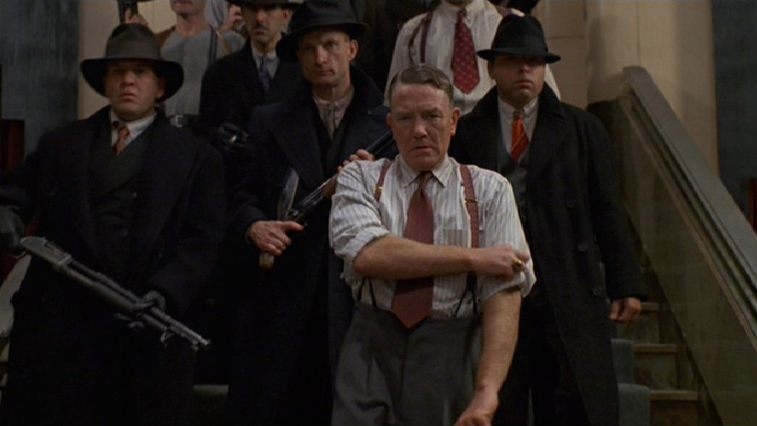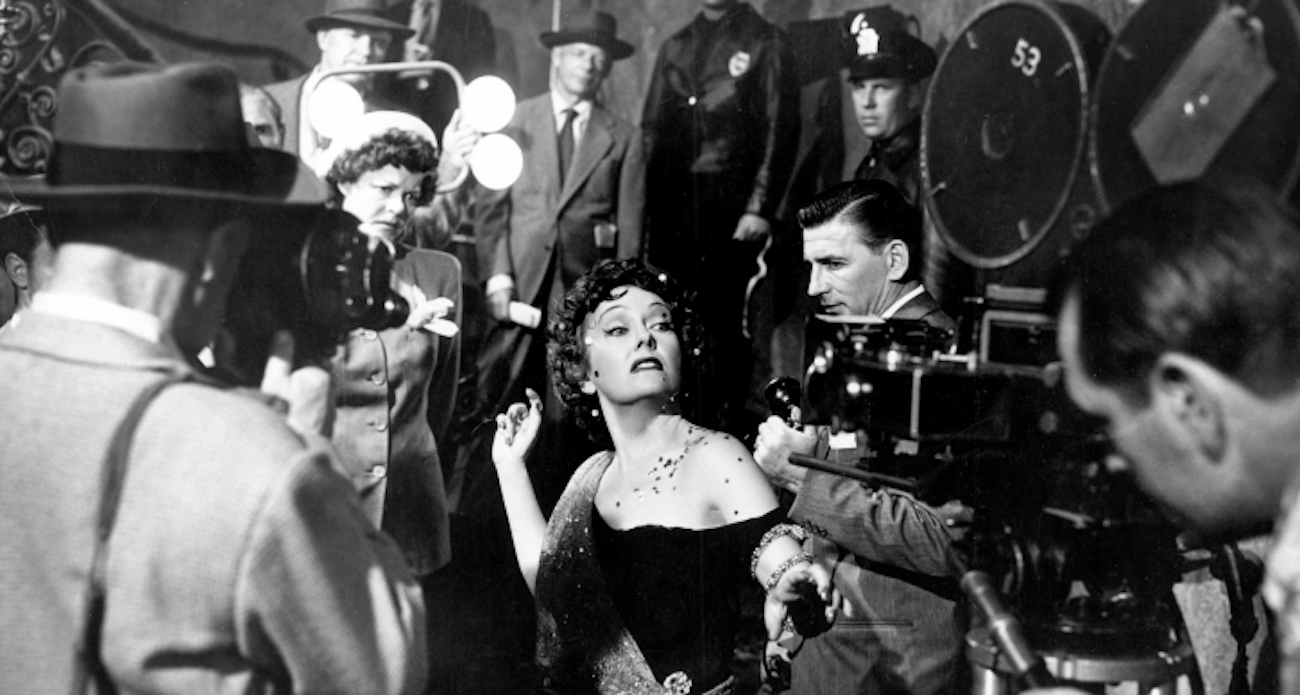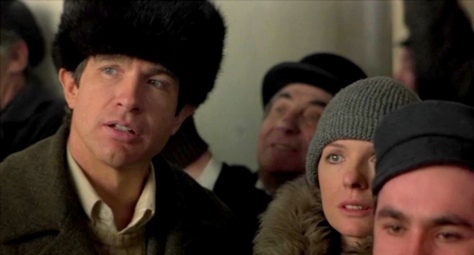By Dennis Hartley
(Originally posted on Digby’s Hullabaloo on March 23, 2024)

Warning: This post is fake news. But it’s got a back beat, you can’t lose it. [Ed Sullivan voice] “Ladies and gentlemen, NOT The Beatles…”
THE ELECTRIC LIGHT ORCHESTRA: “10538 Overture” – ELO’s eponymous 1971 debut album is my favorite in the band’s catalog, due to the presence of Roy Wood. I suspect that Wood (who split during the early sessions for the band’s sophomore effort) tempered his fellow Move alum Jeff Lynne’s tendency to overproduce everything he touches. At any rate, this cut (which sounds like a mashup of “Dear Prudence” and “I Am the Walrus”) is the album’s highlight-setting the mold for ELO’s signature Baroque rock vibe.
BADFINGER: “Baby Blue” – Considering the band’s history, it’s a no-brainer to include a Badfinger song. Originally calling themselves the Iveys, they were “discovered” by Beatles inner circle stalwart Mal Evans, who persuaded the Fabs to sign the band to their then-fledgling Apple Records label in 1968 (Paul McCartney penned their first Top 10 hit “Come and Get It”). This Top 20 hit (very much in the vein of of “And Your Bird Can Sing”) is on the 1971 album Straight Up (it was co-produced by George Harrison and Todd Rundgren).
KLAATU: “Calling Occupants of Interplanetary Craft” – We’ve been observing your Earth! I’m old enough to remember the breathless speculation that surrounded this moderately successful Canadian pop-prog outfit back in the mid-70s…were they really The Beatles, recording under a pseudonym? Of course they weren’t; but they undeniably wore The Beatles’ influence on their sleeves, particularly on their biggest hit (later covered by The Carpenters).
20/20: “Cheri” – Straight outta Tulsa. Band founders Steve Allen and Ron Flynt relocated from Oklahoma to Hollywood in the late 70s and became key movers in the burgeoning L.A. power-pop scene (I had the pleasure of seeing them perform twice in the early 80s; once at the Golden Bear in Huntington Beach and when they opened for The Vapors at The Warfield in San Francisco). Beatlesque harmonies abound in this memorable cut from their debut album.
NICK HEYWARD: “Closer” – In the early 80s, Nick Heyward was best-known as chief songwriter and lead vocalist for the poppy UK band Haircut 100 (he left shortly after their debut album was released to pursue a solo career). Throughout the 90s, he came to embrace the Britpop sound; infusing a heavier guitar tone into the mix while retaining his McCartney-like gift for melody. This cut is one of the highlights from his excellent 1998 album The Apple Bed.
XTC: “Earn Enough For Us” – Tough choice here, as there are any number of tunes by this prolific UK New Wave/Power Pop band that reflect a heavy Beatles influence. If hard-pressed, this cut from their 1986 album Skylarking (produced by Todd Rundgren) would be my fave faux-Fab XTC song-which has strong Revolver-era vibes. In fact, the entire album has a 60s psychedelia/Revolver vibe…which was allegedly a major point of contention between band and producer. Whatever went on behind the scenes, the end product is top-shelf.
CAPTAIN SENSIBLE: “Exploding Heads and Teapots (Past Their Prime)” – Prolific singer-songwriter-guitarist Raymond Ian Burns (aka Captain Sensible) has taken the odd time out from his longtime tenure as a premiere member of The Damned to build a pretty decent catalogue of his own. This catchy, psychedelia-tinged selection is from his third solo effort, Revolution Now (1989).
KEN SHARP: “Floating on a Corn Flake” – Ken Sharp is a sort of power pop Renaissance man; in addition to releasing a number of singles and albums, he has authored/co-authored 18 music books-including tomes on Cheap Trick, The Raspberries, The Small Faces, and Rick Springfield. No mistaking the Lennon influence on this cut!
NICK NICELY: “Hilly Fields” – I was hooked on this haunting, enigmatic song from the first time I heard it on a Bay area alt-rock station in 1982. It sounded like the Beatles’ Revolver album, compressed into three and a half minutes. The artist was Nick Nicely, an English singer-songwriter who released this and one other song, then vanished in the mists of time until reemerging with a full album in 2004 (which was basically a compilation of material he had accumulated over the previous 25 years). He’s since put out several albums of new material, which I have been happily snapping up.
CHRIS BELL: “I Am the Cosmos” – Founded in 1971 by singer-guitarist Chris Bell and ex-Box Tops lead singer/guitarist Alex Chilton, the Beatlesque Big Star was a seminal power pop band. Released as a single, this beautiful, wistful song (recalling “Across the Universe”) is featured on Bell’s solo album, which was issued posthumously in 1992 (tragically, he died at age 27 in a 1978 automobile accident).
THE TIMES: “I Helped Patrick McGoohan Escape” – UK power pop genius Ed Ball was the man behind several bands: Television Personalities, ‘O’ Level, Teenage Filmstars, and The Times (settling on the latter from 1981 through the late 90s, vacillating with a number of self-billed albums along the way). This song is a sly pastiche of 1960s pop culture references, including musical quotes from The Spencer Davis Group’s “Keep on Running”, The Beatles’ “I Wanna Hold Your Hand”, references in the lyrics to “The Prisoner” TV series and something about “…plans to kidnap Paul McCartney”.
THE RAIN PARADE: “I Look Around” – The Rain Parade was part of L.A.’s “Paisley Underground” scene in the early 80s. This hypnotic, psychedelia-drenched song (in the vein of the Beatles’ “She Said She Said”) is from their 1983 debut, Emergency Third Rail Power Trip.
AIRWAVES: “Keep Away the Blues” – I discovered this UK band when I espied their album New Day in a cut-out bin circa 1978. I knew nothing about them, but in those days it was worth the 99-cent gamble (old-school vinyl junkies know what I’m talking about). Truth be told, I still don’t know much about the band (a Google search reveals little) but the album was full of melodic pop rock numbers, including this cut with its George Harrison-worthy riff.
EMITT RHODES: “Fresh as a Daisy” – Emitt Rhodes sounds like both Lennon and McCartney rolled into one on this piano-driven number from his self-titled 1970 debut album. In addition to vocals, Rhodes plays all instruments (he recorded it on a 4-track in his home studio). The multi-talented artist passed away in 2020, after a spotty career.
THE DIVINE COMEDY: “Perfect Love Song” – The Divine Comedy is essentially a pseudonym for Irish singer-songwriter Neil Hannon. Blessed with a rich baritone voice, Hannon is a gifted musical composer with a penchant for penning wry, tongue-in-cheek lyrics:
Give me your love
And I’ll give you the perfect lovesong
With a divine Beatles bassline
And a big old Beach Boys sound
I’ll match you pound for pound
Like heavy-weights in the final round
We’ll hold on to each other
So we don’t fall down
THE SPONGETONES: “She Goes Out With Everybody” – From their formation in 1979 until they stopped recording in 2009, North Carolina-based power poppers The Spongetones made no secret as to who inspired them: Beatles, Kinks, Hollies, Gerry & the Pacemakers, et. al. Essentially, they really dug that fab and gear British Invasion sound, apparent on this obvious nod to the Beatles’ “Please Please Me”. Still, they manage to put their own stamp on it.
THE KORGIS: “Something About the Beatles” – This selection pretty much speaks for itself. It’s quite a lovely tribute, actually.
Why did the apple fall to the ground…
THE THREE O’CLOCK: “Stupid Einstein” – The Three O’Clock is one of my favorite bands from the L.A. Paisley Underground scene (see The Rain Parade above). They actually lean more toward power pop than psychedelia, but I won’t split hairs. This breezy song (taken from their 1983 album Sixteen Tambourines) is chockablock with the band’s signature Beatlesque guitar riffs and gorgeous harmonies.
THE KNACK: “Sweet Dreams” – Love ’em or hate ’em, this was the band that brought power pop into the mainstream (well, for a minute…until the unfortunate “Nuke the Knack” backlash). Taken from Round Trip, this cut is an unabashed nod to “I’m Only Sleeping”.
CHEAP TRICK: “Taxman, Mr. Thief” – Another track that requires minimal explanation for its inclusion. It’s right there in the lyrics!
He hates you, he loves money
And he’ll steal your shit and think that it’s funny
Like the Beatles he ain’t human
Now the taxman is out to get you
THE BROTHERHOOD OF LIZARDS: “The World Strikes One” – Despite the fact that he writes hook-laden, Beatlesque pop gems in his sleep, and has been doing so for five decades, endearingly eccentric singer-musician-songwriter-poet Martin Newell (who has also recorded and performed as The Cleaners From Venus and The Brotherhood of Lizards) remains a selfishly-guarded secret by cultish admirers (guilty!). This selection (reminiscent of “While My Guitar Gently Weeps”) is taken from the 1989 album, Lizardland.
THE JAM: “Tonight at Noon” – I never gleaned Beatles influence in the Jam’s music (The Who and The Kinks, maybe), but they are definitely in full Fabs mode here (from 1977’s This is the Modern World).
THE RECORDS: “Up All Night” – One of of the finest power pop bands to emerge from the UK in the late 70s. Chiming guitars, catchy melodies and harmonies to die for. This is from their self-titled 1979 debut album (issued as Shades in Bed in the UK).
THE JETSET: “You Should Know By Now” – Led by vocalist/songwriter Paul Bevoir, this UK band put out 5 great power pop albums in the 1980s. This selection is taken from their 1986 album Go Bananas!.
THE FLAMIN’ GROOVIES: “You Tore Me Down” – While they started out as a proto-punk garage band, this San Francisco outfit made a profound transformation after they traveled across the pond to Wales in 1976 to work with producer Dave Edmunds. The result was an album power pop aficionados consider the gold standard: Shake Some Action. Nary a weak cut on there; but this one is a standout.
Bonus track!
Longtime Seattle radio personality Bob Rivers and his “Twisted Tunes” cohorts produced this short but hilarious spoof of Tears for Fears’ early 90s hit “Sowing the Seeds of Love” (a song that was so self-consciously derivative I didn’t bother to include it in my list).






























































